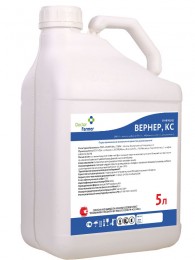
This chemical product is at the registration stage
| Eligible crops: | Cereal crops |
| Application: | Protectants |
| Harmful sites: | Complex of airborne infections |
| Active materials: | azoxystrobin + tebuconazole + cyproconazole |
| Concentration: | 100+120+40 г/л |
| Chemical family: | strobilurins + triazoles |
| Formulation: | suspension concentrate |
| Packing: | canister 5 l |
|
Consumption rate,
kg/ha
|
Culture
|
Harmful object |
Method, processing time,
application features
|
Waiting period (number of treatments) |
|---|---|---|---|---|
|
0,2-0,3 |
Spring and winter wheat |
Loose smut, firm smut, Fusarium and helminthosporium root rots, snow mold, seed mold, including Alternaria seed infection, powdery mildew (in the early stages of development). |
Treating seeds before sowing or in advance. Working fluid consumption – 10 l/t |
-(1) |
| Spring and winter barley | Loose smut, false smut, stone smut, helminthosporium and fusarium root rots, net spot, seed mold, including Alternaria seed infection | -(1) |
||
| Oats | Dusty smut, hard (covered) smut, helminthosporium root rot, seed mold | -(1) |
||
| Millet | Panicle smut (common), seed molding | |||
| Rye | Fusarium and helminthosporium root rots, snow mold, seed mold, stem smut |
Mechanism of action
We will contact you shortly.